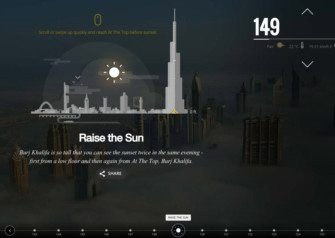
From the highest standards of health, safety and security, to maintaining infrastructure and comfort levels, Facilities Management (FM) is responsible for the well-being of not only the buildings it manages, but also of the residents. While any tower requires that a host of interlinked solutions, teams and mechanical operations work together seamlessly for its smooth maintenance and functioning, in super-tall towers the issue gets magnified manifold.
PW spoke with Ali Al Suwaidi, board member of the Middle East Facilities Management Association (MEFMA), on the intricacies of facilities management for super-tall towers. Ali has previously also been part of the operations team of the iconic Burj Khalifa.
A vertical city
Managing tall towers can involve unique aspects like wind velocity alarms and extremely high water pressure levels, given that such super-tall structures are vertical cities in the air. Also, considering the popularity of mixed-use projects, the various functions and aspects of operations and FM increase dramatically. “FM in super-tall buildings is like you are in charge of an airplane. You are no longer on the ground. A small part of the building is on the ground and the rest is in the sky” says Ali.
The pull of gravity
Given the vertical expanse of super-tall towers, gravitational force comes into play to a large extent, making even simple FM tasks complex and critical. “Gravity plays a big role”, adds Ali. “For example, leakage. You don’t want to develop a leak because the gravity here is maybe 10 times that of normal buildings and the pressure developed is really huge compared to other buildings. And not only in water. Even in electricity. Also, the evacuation is not so easy. So you have to be pro-active in bringing the right information from the critical systems to make sure you act before the problems are taking place. ”
Forewarned is forearmed
The complexity of being forewarned about potential accidents is heightened in super-tall towers, given the massive effect it can have on the residents and the building. Thus the FM teams need to constantly remain on top of building operations, mechanics and equipment, ensuring all systems are functioning correctly and effectively. Pre-alarms set to defined parameters for water pressure or voltage should alert FM teams to faults and potential problems to avoid any major accidents, as a small lapse or negligence can lead to a significant impact.
“You need to ensure that you have set all the parameters of the pre-alarms in a way that you get alerted much in advance to help you to prevent accidents”, says Ali. “For example, if the water pressure needs to be seven bar, and the pressure release valve that helps to reduce pressure and maintain it, is jammed, then the pressure will increase, leading to a burst pipe. If I don’t want a water leak alarm, I need a pressure sensor to tell me the pressure is in the pipe so that if the pressure goes beyond normal conditions, I can go and isolate the valve to avoid a burst pipe”.
The pilot room
The control room is “like a pilot room” says Ali. “It’s as if I am driving the building. So all critical systems pre-information should come to me.” The control room monitors and manages the various dynamic parameters of a super-tall tower.
Key responsibilities in a super-tall structure
* Understand the design of the building.
* Establish pre-alarm parameters like water pressure, and voltage drop among other things.
* Ensure pre-alarms are reaching you in time.
* Constantly and proactively monitor, isolate and resolve issues to avert accidents.
* Use technology to achieve the best safety, efficiency and effectiveness.











